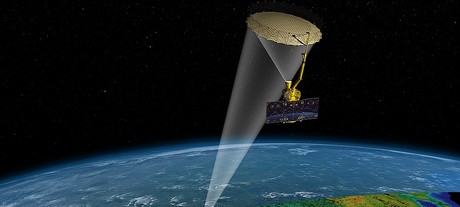Ionospheric sounders suitable for CubeSats

NASA researchers are miniaturising radiometer technology used to probe the ionosphere.
NASA scientists and engineers at the Goddard Space Flight Center are upgrading and miniaturising the electronics on a prototype instrument called the Concentration vs. Height for an Orbiting Electromagnetic Sounder, or ECHOES.
The device could be used to ‘sound’ the ionosphere from either a ground-based observatory or ultimately a constellation of CubeSats.
Solar flares can cause a sharp increase in the number of ionised particles in the ionosphere, thus changing the altitude and density of the particles.
“Gravity pulls the denser plasma (ionised gas) down toward Earth to lower altitudes that are less dense. This is an unstable configuration,” said ECHOES Principal Investigator and Goddard scientist Mark Adrian. “This motion leads to a turbulent mixing of the ionosphere, not unlike pouring cream into your morning coffee.”
To determine the electron density vertically in the ionosphere, scientists have long used radio sounders. A range of different radio frequencies are directed vertically to the ionosphere and a receiver then collects and measures the values of the returning signals.

The immediate plan is to use ECHOES on the ground, contributing to a network of instruments that support space-weather prediction and real-time mapping of the ionosphere. However, the instruments also could fly in space, such as in a constellation of CubeSats that would make simultaneous, multipoint soundings of the top side of the ionosphere, which lies 75 to about 1000 km above Earth’s surface.
The sounding technique is at least a century old. However, it wasn’t until the dawn of the space age that the technique was applied to sounding-rocket and full-fledged satellite missions, such as the Canadian-built and NASA-launched Alouette 1 in 1962.
More recently, NASA launched the Radio Plasma Imager on a mission called the Imager for Magnetopause-to-Aurora Global Exploration, or IMAGE.
“Basically, what we’re doing is miniaturising a 100-year-old radio receiver signal-processing technology,” said ECHOES Co-principal Investigator Damon Bradley, who led the development of the digital signal-processing system for the radiometer on NASA’s Soil Moisture Active Passive, or SMAP mission, which tracks global soil moisture levels.
“ECHOES is essentially a low-frequency radar that uses space-based digital-signal processing, as on SMAP, but for probing the ionosphere as opposed to mapping global soil-moisture levels,” he added.
Before the miniaturised instrument can fly in space, the team needs to prove that it’s capable of obtaining density measurements in a relevant environment. As part of its technology development effort, the team plans to integrate ECHOES electronics and antenna systems with other instrument hardware and execute a test at the Goddard Geophysical and Astronomical Observatory.
2025–26 Thought Leaders: Tim Karamitos
Tim Karamitos from Ericsson discusses the connectivity requirements of emergency services and...
2025–26 Thought Leaders: Ruth Tovo
Comms Connect panellist Ruth Tovo, from the South Australian SES, discusses the technical...
ARCIA update: celebrating excellence in our industry
The ARCIA Annual Gala Dinner and Excellence Awards took place during the same week as Comms...




